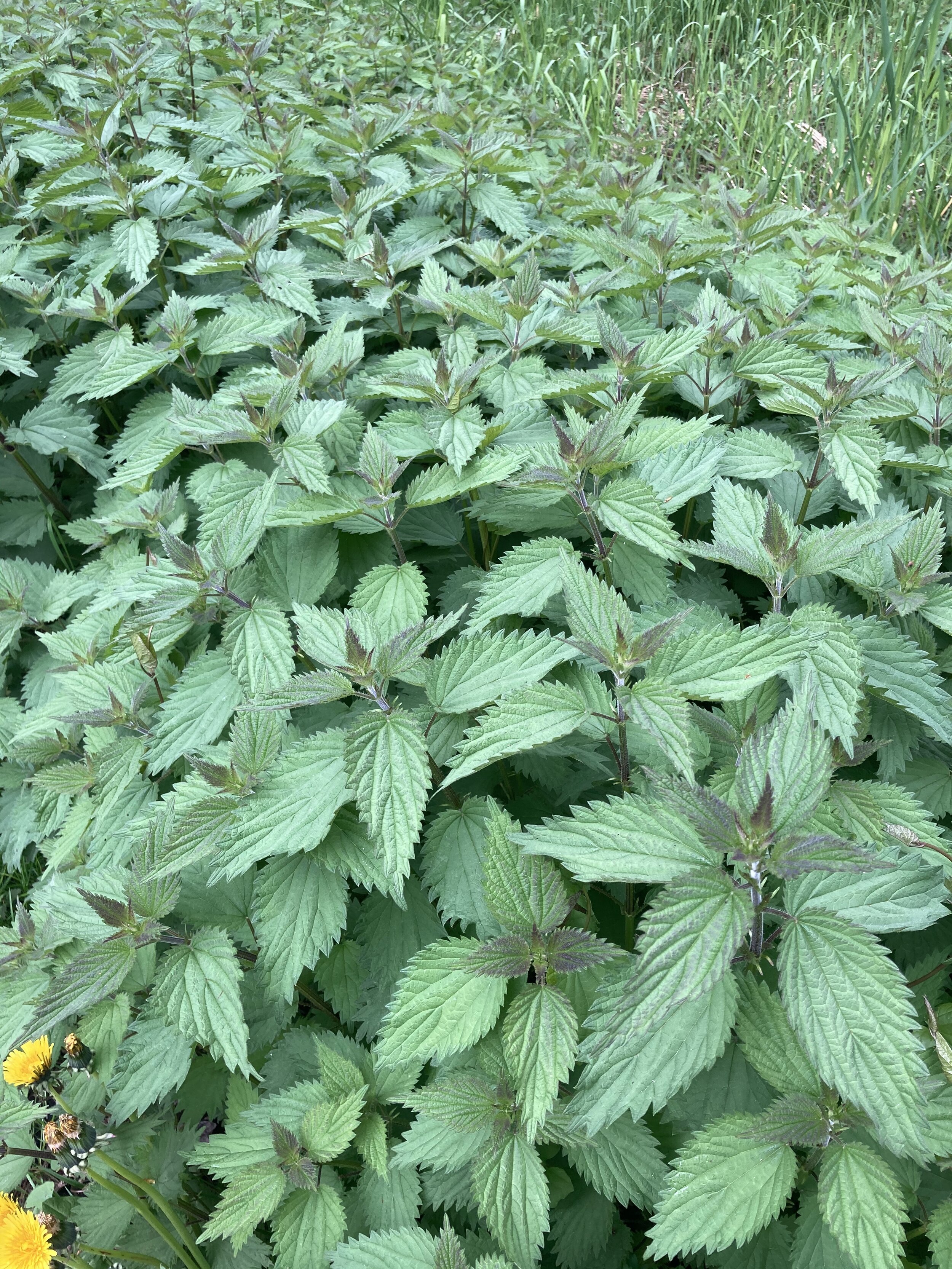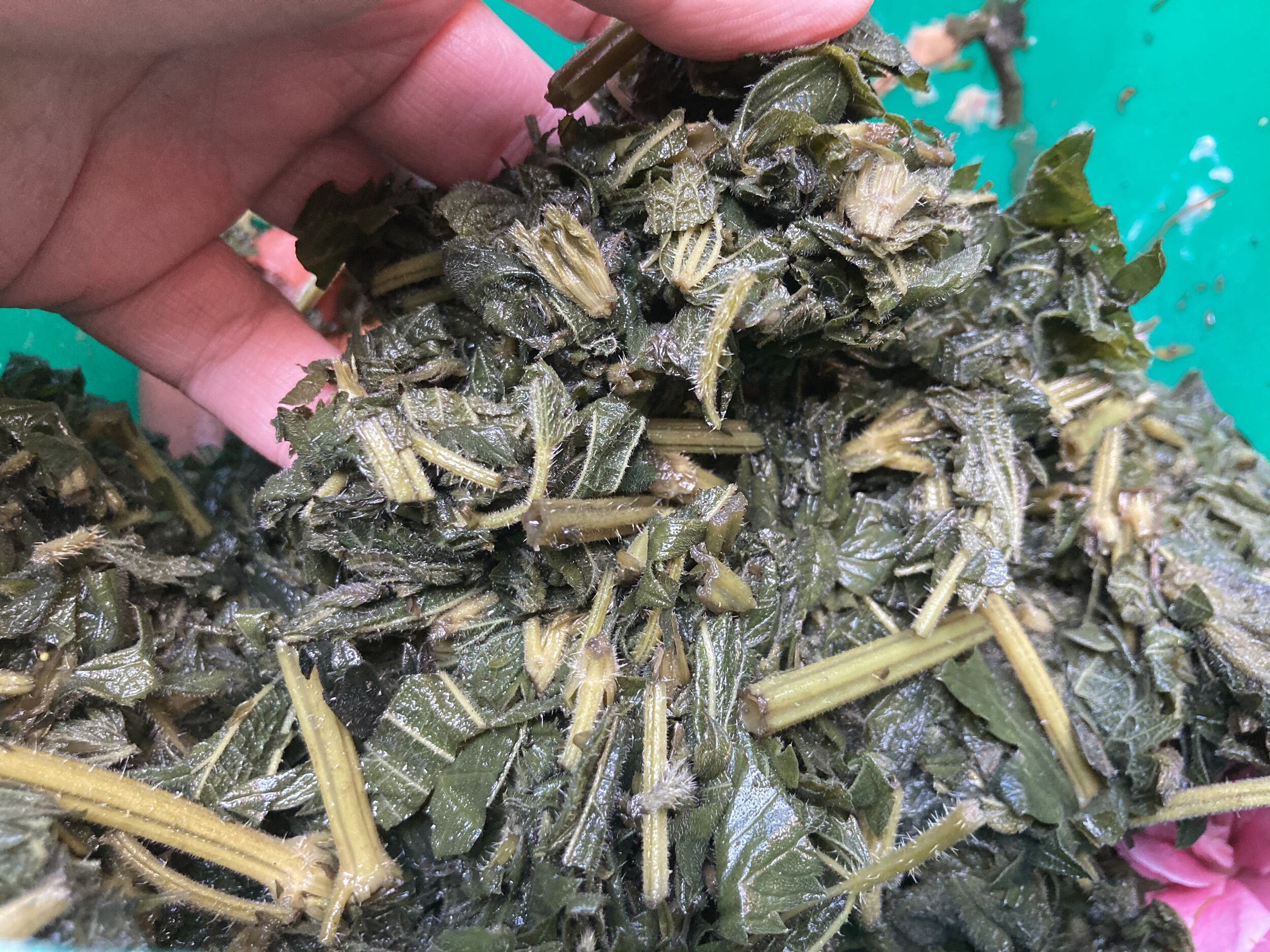Stinging Nettle
Also known as common nettle, is an important source of medicine, food and textiles for many cultures, including First Nations and other Indigenous Peoples. Here on the BC coast, our native nettle is Urtica gracilis, or Urtica dioica subspecies gracilis. A perennial herbaceous plant native to Canada and the US, I found out recently that the variety growing in Finland yields grey-greens, but what about ours?
The Patch
Luckily, there is a sizeable patch growing near my home so over I went. The plants were still quite fresh at less than a meter tall during this forage in early May. I selected some plants and only harvested the top 6” or so. Gathering in the end about 280 grams of fresh nettle.
Ouchie
The plants contain hollow stinging hairs which can cause a painful condition known as “'contact urticaria” which frankly sucks and makes you feel like not all your choices in life have been good ones. To harvest these, I brought along a pair of unapologetically feminine leather gloves, a pair of scissors and a collection bag.
Into the pot
About 12 liters of tap water were added.
Simmered (~80°C)
The pieces were rough chopped in the water and the contents simmered for about an hour and left over night. It was interesting that the leaves kept their green colour unlike the horsetail or bitter dock I’ve also been working with (both of those turned brown after being cooked).
Left overnight
In the morning, the pot had a oily film on the top. Not sure what that was about. I tried to scoop it out but it just kept breaking apart. I decided to leave it. I made up a mech paint bag with two 11 gram skeins of wool which had been left to soak in water for about 20 minutes. One mordanted with alum and the other iron (the iron one is the brown skein on the right in the bag).
Simmered again
The fiber was simmered again for just over an hour and left to cool in the pot. I did my usual poking at the fiber with some flipping around to try and even out the colours.
Results with Alum
The alum mordanted skein came out a yellowy-green.
Results with Iron
The iron mordanted skein came out a deep chocolate brown.
Harmless Compost
Turning my exhausted dyestuff back into soil is always part of the process. It’s still odd to touch the nettle now in it’s harmless state. The pot smelled wonderful during this process and makes me curious to try it as a source of food. Maybe in a salad or soup.










